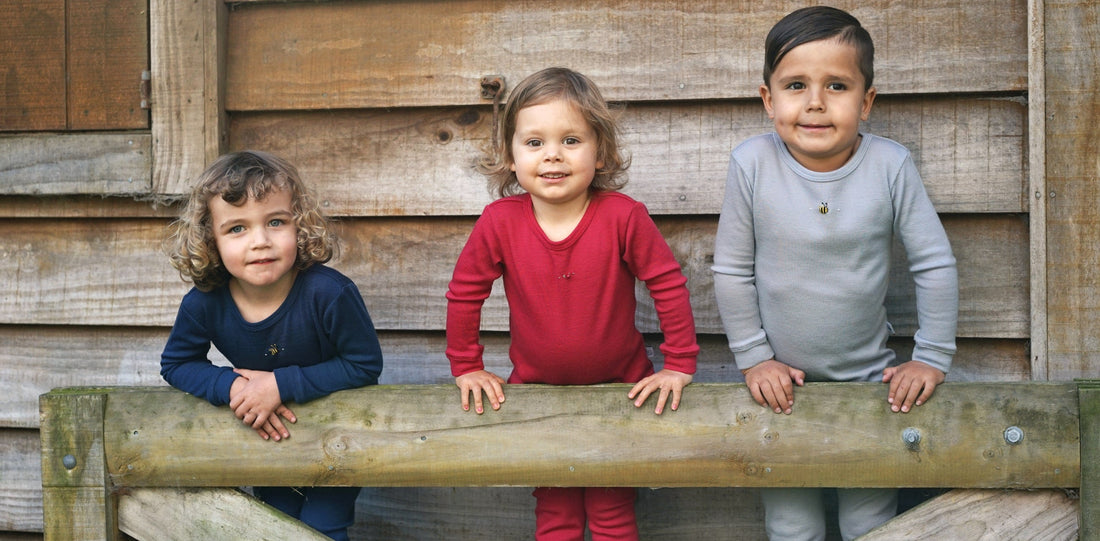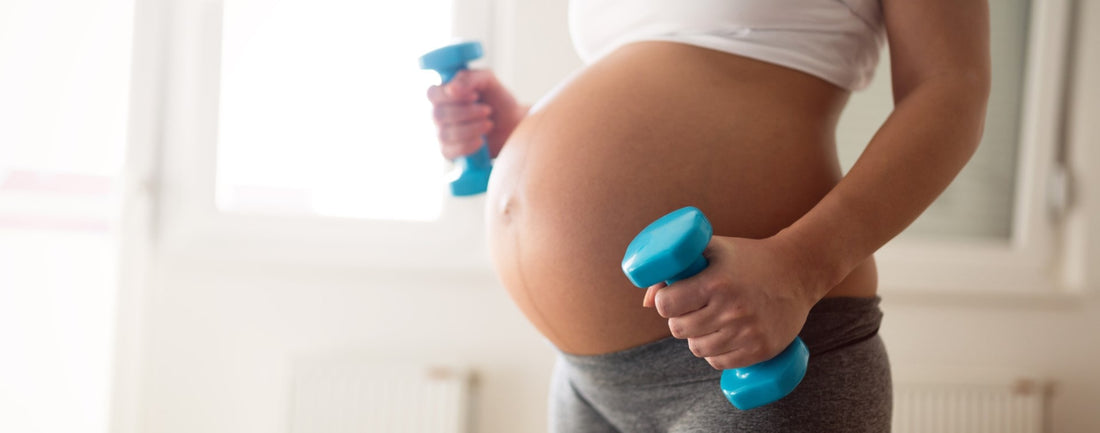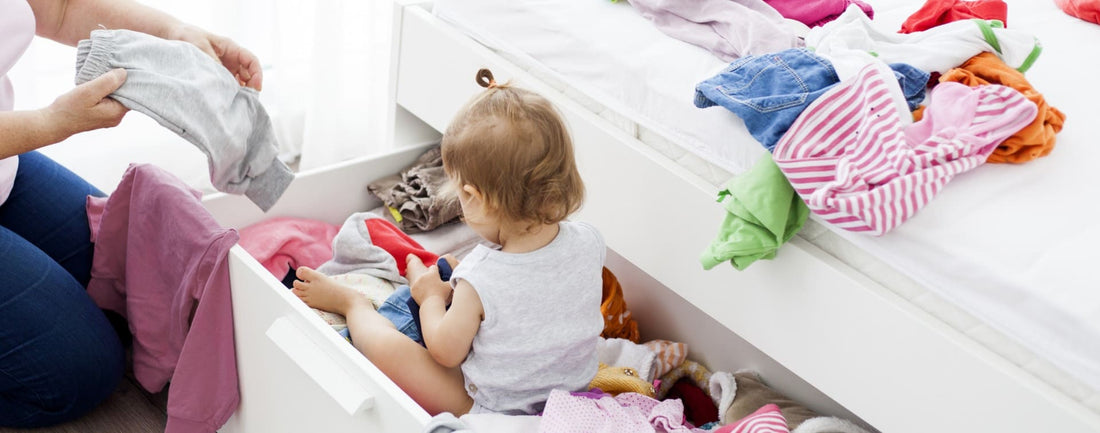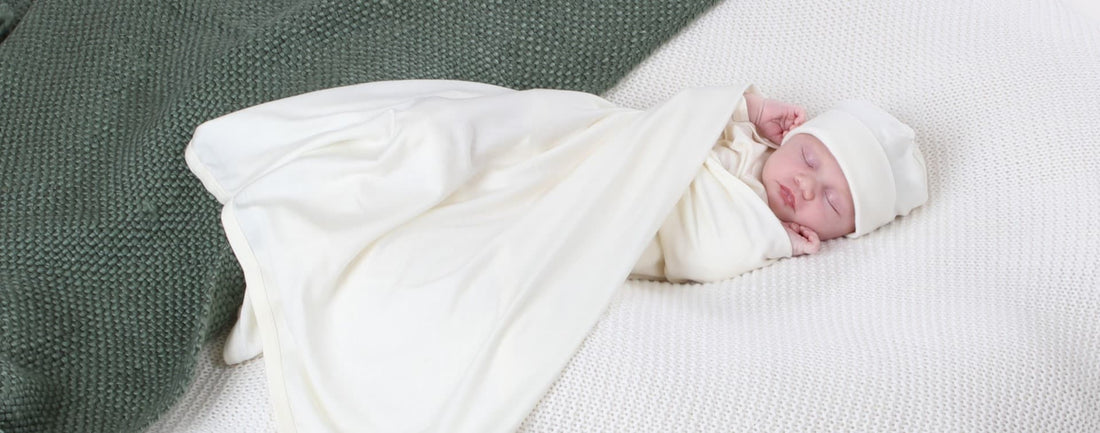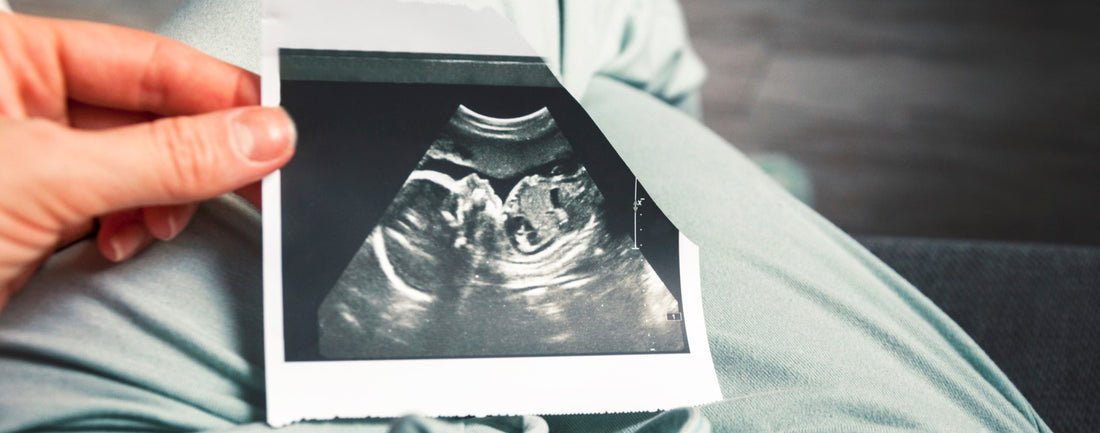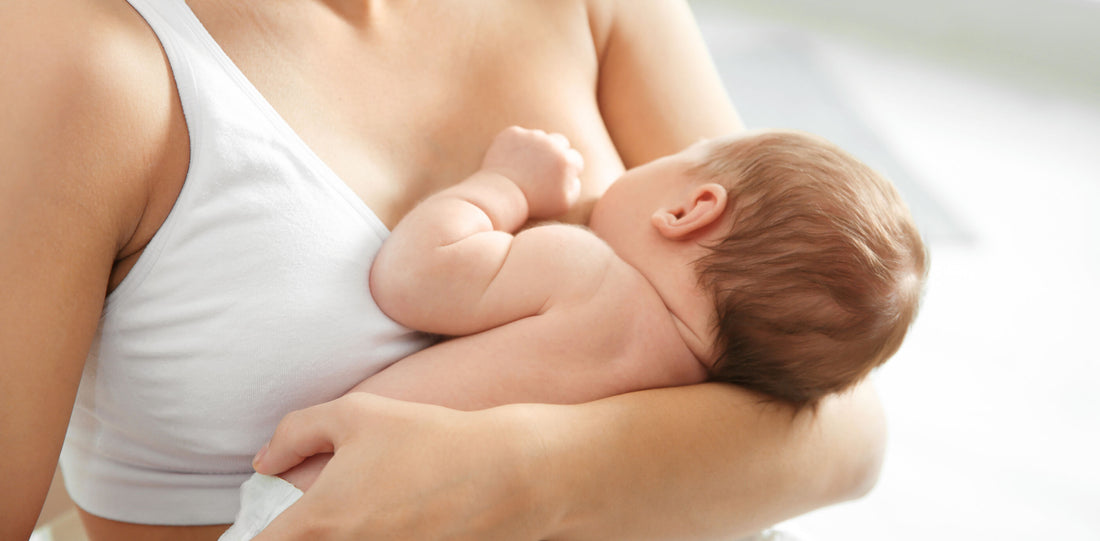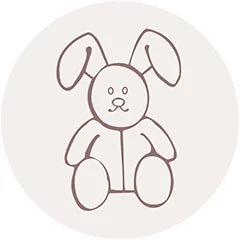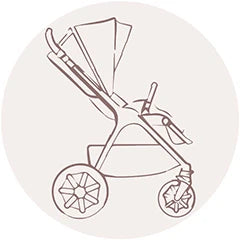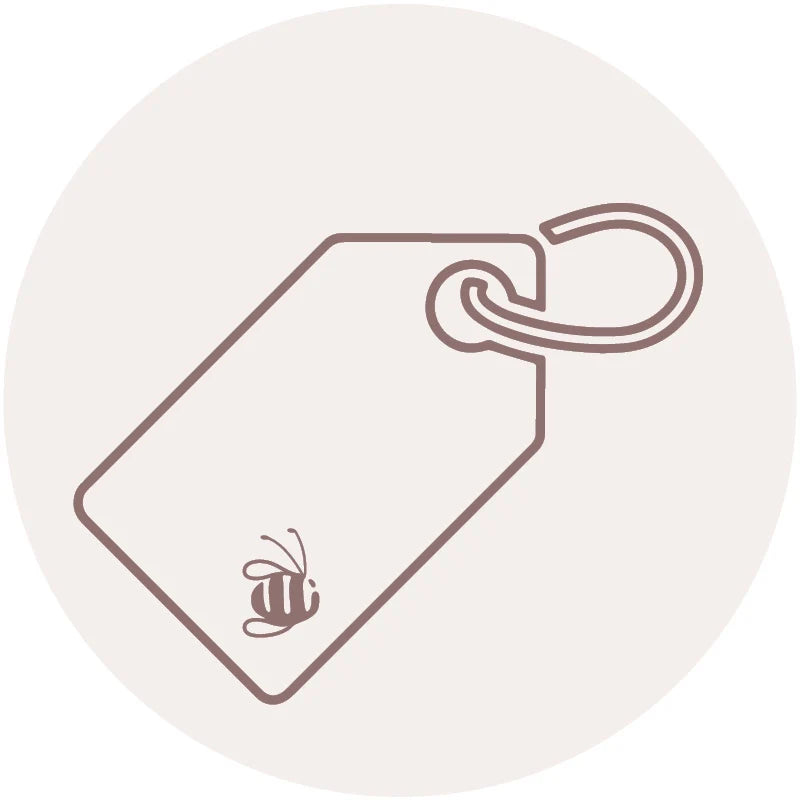Post
Why Buy New Zealand Made Clothes?
From garments more well-travelled than most of us to clothing produced in factories not quite up to scratch – the backstory of what we buy has become an increasingly hot topic. Keeping shopping habits local is an easy way to not only do your bit for the environment but also support the New Zealand economy and the people who live here. Better still, buying New Zealand-made no longer means compromising on quality or choice – in fact, it’s typically quite the opposite! Do it for the birds and the bees (literally) The environmental impact of clothing sourced overseas is huge. Buying local often means reducing ecologically unfriendly packaging, and will certainly cut out vast amounts of fossil fuels in transport. Clothing made in New Zealand also complies with strict guidelines, which is a big win for the environment in an industry that is notoriously hard on the planet – no pesticide and fabric-dye-filled runoff contaminating water supplies here thanks! Feelgood tip – swap those well-travelled goods with locally-made merchandise. Fast fashion or future-friendly? The days of patching worn jeans and sewing up holes in socks are long gone – popping to the shops for a wallet-friendly replacement is just too easy. But with prices so low, something’s got to give – whether it’s the quality of raw materials, worker conditions, or the standard of the finished product. This fast-fashion movement ironically has you popping to the shops for replacements a whole lot more often! All this disposable fashion also becomes a major landfill problem. Synthetic fabrics are much cheaper to produce (they make up about 60% of a typical closet) and can go on to live hundreds of years after parting ways with your wardrobe. On the flip side, buying New Zealand-made means these items live up to local production standards, and are far more likely to survive playground adventures and multiple trips through the washing machine. They might even look good enough to pass on to family or friends once you’re done with them – recycling at its best! Feelgood tip – invest in quality, locally made items that can be passed on. Guilt and hassle-free shopping Shop-a-holics rejoice! If you’re buying locally produced goods, pat yourself on the back for your contribution to the local economy. You’re supporting fair, local employment and helping to keep New Zealand businesses alive and able to compete with the big guys. Shop-a-holics rejoice some more! If you’re buying locally produced goods and have accidentally bought the wrong size for your little one, it’s as easy as popping into a store or a local phone call to fix your problem. Local businesses are usually happy to help (as each customer is important) whereas it’s likely you’re literally one in a million for big global companies. Even finding contact details can be a challenge! Feelgood tip – shopping local simply supports New Zealanders. Dimples' does it differently No compromises here, just adorable, high-quality clothing, using high-quality raw materials, produced by fairly treated Kiwi workers! Our commitment to the environment hasn’t changed as the business has evolved and grown, and neither has our commitment to our workers. All Dimples clothing is made here in New Zealand from locally sourced merino (or from our neighbouring Australian sheep) and pure organic certified cotton (to ensure the impact of cotton farming is minimal). We don’t have a huge factory producing our clothing – instead, our expert sewers work from their homes. It’s essentially a scaled-up version of the small home workshop where it all started. The end result is hard-wearing, long-lasting clothing – that stays looking super cute for longer. Feelgood tip – buy New Zealand made.
Learn moreExercising while pregnant, yay or nay?
Should you exercise while pregnant? Optimise health for you and baby by keeping fit For the majority of women, pregnancy will mean being uncomfortable, one way or another. Research shows that energy expenditure during pregnancy is at the upper limit of what humans can maintain physically — it’s hard work. It’s no surprise that lots of women find it difficult to keep on exercising throughout this – especially when you already have kids running you ragged. But exercise is important for you and your baby’s health. The American College of Obstetricians and Gynecologists (ACOG) recommend that expectant mums try to complete half an hour of moderate exercise every single day. Is it safe to exercise during pregnancy? Yes. In general, if you were physically active before your pregnancy, you can continue exercising as long as it’s comfortable. But – and this is a big but – pregnancy is not the time to exercise for weight loss. Your goals should be about maintaining your fitness and keeping your muscles in tune, so you’re ready for birth and those early newborn days. Benefits of exercise when pregnant Even if the goal of 30 minutes a day seems unobtainable, try to do something. Here’s why it’ll be worth the effort. You’ll: Be comfier: exercise helps to minimise backaches, bloating, swelling and constipation Stay healthier: exercise can help prevent and control gestational diabetes Have more energy Feel happier Cope with the weight of that big belly better, with improved muscle tone and posture Get better sleep Have an easier time in labour Find it easier to regain your fitness after the baby is born How to exercises safely during pregnancy If you already have an exercise regime, you may not be able to complete it at the same intensity as before. That’s to be expected. Here, we have a variety of options for low-impact fitness. Swimming – Low to no-impact, swimming lets you exercise without feeling the added weight of baby. You’ll relieve stress on joints, alleviate nausea and sciatic pain, and help to reduce water retention. If you’re not a swimmer, try aqua jogging. Just be gentle on yourself and don’t jump or dive into the water. Your baby can’t handle the bubbles that are created inside when you change altitude underwater. Walking – Probably the easiest and cheapest form of exercise is walking. You can do this right up until your due date, you can go as quickly or slowly as you like, and you don’t need any special gear. If you have kids already, walking to the park is a great way to fit exercise into your busy schedule. Running – If you’re already a runner, it’s fine to continue during pregnancy. Whether it’s on a treadmill or outside, whatever you’re used to and feel comfortable doing is fine. However, just be aware that your ligaments and joints will loosen during your pregnancy, which can put you at risk of injury. Group fitness classes – Low-impact workouts are great, from Body Balance to Zumba. They pump your heart rate up, get the blood flowing, and make you feel great. However as your body changes, so does your center of gravity. This can make balancing difficult and jumping can be challenging. Ask the instructor for alternative moves that will accommodate your pregnancy. Excercycling – Using an exercycle is great during pregnancy. It’s low-impact, you can pedal with as much resistance as is comfortable, and with little risk of a fall. You can do spin classes if you tell your instructor you’re pregnant and avoid pressure and standing. Martial arts, kickboxing, pole dancing – If you have been doing these activities for a long time already, it’s fine to continue doing them for as long as it’s comfortable. Avoid impact/pressure to the stomach and stop if you feel uncomfortable. HIIT (High Intensity Interval Training) – This can be very intense, so it’s not something you should be trying for the first time during pregnancy. If you’ve been doing it for a while, make some modifications and you should be fine. Avoid jumping and high-impact moves, and use lower weights than normal. Be careful with anything that involves balancing, and stop if you feel short of breath or dizzy. Outdoor sports – Give skiing and snowboarding a miss, because a fall could be catastrophic. Things like ice skating and horseback riding may be fine for the first two trimesters, but once your balance is affected they may become difficult. Pilates, yoga and barre – These are ideal pregnancy exercises. The practitioner should be able to tailor them to suit your needs. Focus on your core, pelvic tilt and floor exercises, core strengthening and flexibility. Look for classes that can be adjusted for pregnant women, as these will require less balance, more breathing focus and appropriate strength exercises. Weightlifting – This is a great way to increase strength and tone. Use lighter weights for more reps and it may be more comfortable to use machines rather than free weights, to help control movements and limit injury. Exercises to avoid Most things are safe, as your baby is nestled in protective fluid in the amniotic sac. However you should avoid: High-impact exercise that you’re not used to Lying flat on your back, as this may put pressure on blood vessels and reduce blood flow Contact sports, such as rugby Skiing, snowboarding, ice hockey or gymnastics, where there is a high risk of falls Scuba diving, as the baby has no ability to avoid gas embolism Anything in high altitudes, as you are more at risk of altitude sickness Exercising in high temperatures, as you may overheat the baby Get moving, mama! If you’re pregnant, exercise is one of the best things you can do for your and your baby’s health. If you’re already active you can continue doing what feels comfortable, unless your sport of choice is high intensity or potentially harmful to baby. Do warmups and cool downs to give you time to adjust and take notice of how your body feels. Adapt exercises to lessen the impact on your body, but in general you can do what feels good. If unsure, please seek advice from your healthcare provider. Make sure you eat enough, drink enough water, and listen to your body. Give your baby the best possible growing environment and the best entry into this world.
Learn moreKeep, pass-on or donate.
Keep, pass-on or donate. Here’s something that will be news to no-one: babies grow, and fast! That adorable onesie they came home wearing, the outfit they met their grandparents in, their first birthday party dress… they’re now sitting in storage – boxes of tiny clothes taking up room. That clutter helps no one, but there’s another downside to storing clothes – it actually damages them. Even if you wash and dry clothes thoroughly and store them in a dry, dark place, it’s likely they will suffer. Protein stains from drool, milk spills and spit-up get embedded in the clothing. If they’re in regular use, the marks are kept at bay, but in storage, they develop into yellow and brown stains. Most of these become permanent and are resistant to cleaning. Elastic and stretchy clothes will lose their elasticity, especially if they’re stored in a warm environment. So, baby clothes need to come out of storage, but how do you tell if they’re keepsakes, hand-me-downs or ready to be donated? We’ve made things simple with a checklist of things to consider before adding an item to the ‘keep’ pile. Donate or pass on, if the clothes are: Super girly or masculine If you have non-neutral clothes, it might not be smart to keep them for future children, unless you’re really comfy blurring gender lines. The chance of having that same-gender again is only 50/50. Very tiny There’s no way of knowing how big your next baby will be. If you had a premie the first time around, that 10lb second baby (ouch) won’t ever fit those tiny clothes. Strictly seasonal While high-quality merinos will suit most seasons, it’s best to get rid of anything that’s very heavy, or very light – light blousy dresses, or heavy jackets. If your next child is born at a different time of year, he’ll have outgrown the items before the weather gets cool or warm enough to wear them. Damaged or stained If you wouldn’t put your baby in the clothes now, don’t expect your mind to change later. Really useful to someone else Whether they’re a permanent donation to the Salvation Army or a loaner to close family or friends, they’re doing more good being used. Keep if the clothes are: Emotionally significant Perhaps your next baby won’t ever wear that tiny beanie, but you can’t bear to part with it. Some precious items are worth holding onto, for the memories. Versatile If something will work across seasons, genders, and is stretchy to accommodate growth, it might be worth keeping – you’ll have a better shot of getting your next baby into it at some point. Clean, tidy and high quality Everything you keep should look almost new. This means you’re more likely to still have some wearable things when the next baby comes along, even after being stored for a few years. When should you let those baby clothes go? Letting go can sometimes be difficult – it can be farewelling some happy moments in your life. That includes maternity clothes too – even if you ended up really hating those stretchy jeans, saying goodbye feels like letting go of that precious time. Many of us keep clothes well beyond any useful point if they hold beautiful memories. If this is you, then it’s time to make some choices. Keep a few outfits that are really important to you and have some lovely memories attached. You can even have some items made into a special memory quilt or cushion, so you can have them forever in a useful way. Then give away the rest. You’ll have your storage space again, you can feel good helping out another mother, and know that clothing will be used again to create happy memories for someone else.
Learn moreWe are on the Move!
Lots more space just across the road! Dimples' has an exciting announcement – and it's a little different to your usual gender-reveal party. We're on the move! Although our current space has served us well, it's time to move out of the small (sometimes, let's face it, a bit cramped) retail store on 14 Kent Street in Newmarket. We're headed to a bigger, newer, prettier space – just across the road at 25 Kent Street. Here's everything you need to know about the new space and what you can expect when the doors open on Tuesday, 3rd September. More range in-store With more space, you'll be able to see and touch far more products in real life! We'll still have all of your favourites, along with products that use to be only available online and all-new brands! You can also expect brand new displays, making it easier for you to find the beautiful, practical things you need to make your baby's first years ever-so-sweet. With the release of our new store, Dimples will also be releasing the first-ever New Zealand Stokke and Nuna flagship store! Offering a first-class brand experience where the full range of products take centre stage. Easy parking Don't worry about getting lost trying to find our new store – it's just across the road from our old location at 14 Kent Street. You'll find plenty of free customer parking right outside, too, so you can drive on up and come straight in. More staff to help you Getting ready for a new arrival, whether it be your first or fourteenth, can be overwhelming. But with the right help, shopping for a new baby should be enjoyable! That's why in our new store you'll find more staff to show you around, answer your questions, and help you choose the right things. Setting up your nursery from scratch? You'll now also be able to book a consultation with one of our team members, who can take you through everything you'll need for your new baby. And with the launch of our new store, we now have 6-month interest free finance options available! Keep bubs safe – expert car seat installation A must-do before the new bubba arrives is getting your car seat installed. We'll have qualified car-seat installers on-site, so you can drive away knowing your car seat is correctly – and safely – affixed. We can't wait to show you around This is a big move for Dimples – and our loyal customers – and we can't thank you enough for being a part of our journey so far. We're eager to open our new store – we've been squeezed into a small space for a long time, and we're ready to give our products the room they deserve. We're currently still in the design process, but we can guarantee our new shop will look and feel different in all good ways. We hope you love it just as much as we do. Stay tuned for more opening information – we can't wait to see you there!
Learn moreTop Ten Tips for a Successful Naptime
Naps are more challenging than night sleep but can be done. Napping is incredibly important, not just for your baby’s wellbeing, but for yours too. When naps are too short, erratic or unpredictable, it can be frustrating, worrying and exhausting. If you’re struggling to get your baby or toddler to nap, these ten tips could help. 1. Look out for sleep cues Ideally, your baby will be ready for sleep, but not overtired which can make napping harder. Keep an eye out for signals like frowning, jerky movements, scratching their ears or head, or making grunting noises. Toddlers may get sillier, louder, or easier to upset. 2. Skipping a nap won’t make for better sleep later Don’t skip a nap with the hope that your baby will have a better sleep later. Missing a nap will lead to overtiredness, making napping even harder. If your child has skipped a nap, they might need to go to bed earlier to make up for it. 3. It’s ok to try later If your baby is point-blank refusing to nap, it’s ok to take a break. Try pausing, and doing something else with them. If you’re following a sleep-training technique or trying to break a sleep habit, it’s ok to revert to what you know will work – you can try again when your baby is no longer overtired. 4. Avoid device screens TV, computers and other devices with screens emit blue light, which can disrupt melatonin production – the hormone that makes people feel sleepy. Watching TV up to 90 minutes pre-nap can lead to less nap time, or missing sleep altogether. This can add up to a sleep deficit, which can make the problem worse. Keep screen time to a minimum and after nap time only. 5. Develop a schedule You need to find a balance between naps and feeding, so your baby isn’t waking up because of hunger. To maximise sleep it’s also important that there is enough (but not too much!) time between sleeps. For many parents, a schedule makes this easier. Every child is different, but this sleep and feeding schedule will help give you an idea of what could work. 6. Have a pre-nap routine Bedtime routines are important – and naps need them too. Create a short pre-nap process that is a pared-back version of what you do at night. It should be cosy and relaxing, preparing your child for her nap. 7. Keep the light low and encourage quietness Your baby will find it easier to fall asleep and stay that way in a cool, dark, quiet room. To create this ideal sleep environment, check the room isn’t too hot – between 18 and 21 degrees Celsius is ideal. Hang blackout drapes, and use white noise to block out sudden noises. 8. Consistency is key Aim for at least one nap at home during the day – ideally the first of the day. If you’re out and about, the naps aren’t as restful as ones at home, which will lead to your baby becoming overtired. 9. If your baby stops napping, don’t panic Your baby can stop napping for many reasons – illness, teething, a sleep regression, a growth spurt, a developmental leap, or a change in napping schedule. During sleep regressions, your baby or toddler will change their sleeping patterns for the worse. This is exhausting and stressful, but it’s normal. This regressions generally align with big developmental leaps, around 4 months, 8 months, 11 months, 18 months, and 2 years. Nap transitions are when a child’s sleep needs change. Commonly newborns will nap 4-5 times a day, which drops to 4 at about four months old. Then, from 5-8 months, they’ll have around three naps and start resisting the fourth. From 9-18 months this will reduce to two naps a day, and you can expect your child to continue having one (ever shorter!) nap a day until they're about 3. 10. Be kind to yourself Naps are notoriously tricky to manage – your baby won’t have the same sleep pressure during the day as they have at night, so even small things can throw you off course. Like everything else involving babies, be patient with yourself and them. What’s ‘normal’ won’t work for everyone, so give yourself permission to have a bit of trial and error, and allow gentle deviations from the routine when required. Persistence, flexibility and support Naptime doesn’t have to be a struggle. Keep an eye out for sleep regression or nap transitions, and adjust schedules accordingly. Keep persisting, ask your friends and family for help and support, and pay attention to your baby’s natural tendencies. Before long, nap time will be something to look forward to!
Learn morePros and cons of getting a nanny
A nanny or not? That is the question It could be the best decision you ever make So, you’re ready to go back to work – now comes the sticky question of who looks after the kids. You’ve got plenty of options, all with different pros and cons, including daycare, home-based care and family members helping out. Not often explored in NZ is the option of getting a nanny. While some families think they’re the best thing since sliced bread, it’s not the right solution for everyone. Advantages of hiring a nanny No more frantic mornings It’s hard enough getting yourself out the door, let alone an unwilling toddler, or a baby who always seems to need changing at the wrong time. With your nanny around, frantic mornings are gone. It’ll be as simple as getting yourself ready and kissing your baby’s goodbye. One-on-one care It’s comforting to know that yours is the only kid (or kids!) your nanny has to worry about. There are no other crying babies to attend to, so they have the nanny’s attention all the time. That means your children’s emotional, physical and developmental needs are there first priority. Your children will also be at home in their own space – a far more relaxing environment than a Daycare Centre. Flexibility A nanny’s hours will usually be more flexible than daycare. Rather than rigid schedules, you’ll work to understand how flexible the nanny’s hours are, and how you can handle abrupt changes of plans. No more last-minute calls to daycare or paying through the nose for late pick-ups. Less illness Daycare is a breeding ground for coughs, colds and other childhood illnesses. By keeping your child away from other children, you’re avoiding a host of health issues, which is better for everyone in the family. Help in the home Imagine coming back to a tidy home, washing done and the kids fed. Nannies don’t just look after the kids – they can also help around the house too. The level of extra duties will depend on how many kids they are looking after, so it’s best to detail these from the start. No-compromise approach to care If you parent a certain way or believe in certain approaches, it can be difficult to let others look after your child when they don’t share your values or views. When you hire a nanny, you can choose someone who already fits your family, and then ask them to closely align with your parenting style. Daycare, homebased care or family members won’t give you nearly the same level of oversight and control. Disadvantages of a nanny You’re reliant on just one person If the nanny quits unexpectedly – or is unwell – you may be stranded with no other childcare options. A daycare is always open! Less social interaction Socialization is important for your child’s future. Daycare means your child has daily contact with peers but staying at home with the nanny means your child may miss out. To combat this, you could ask your nanny to schedule playdates, outings, and music or swimming classes. A bit pricier A nanny will need to be paid at least the minimum wage, which is $23.15 an hour – although you should expect to pay up to $30 an hour for a good one. That means a ten-hour day will cost at least $231.50, or $1,157.50 for a five-day week, which is a lot more expensive than your average daycare. If you have two or more kids, a nanny becomes a more economical option – you’ll pay the same hourly rate, regardless of the number of children (within reason!), but you pay per child for daycare. If the nanny can help out by doing some housework each day, the equation becomes even more attractive. More paperwork If you employ someone directly, you may have to pay PAYE and other employer-related taxes and benefits. You also need to be familiar with the Holidays Act and Employment Relations Act. Working through a nanny agency can solve some of these problems – they’ll handle the paperwork but may add a fee. Lack of privacy This person will be in your home, all day, with no other adult there. Some people may struggle with this and feel like they are losing their privacy. Questionable qualifications How do you know you can trust this person with your child? In NZ, there’s a Certificate in Nanny Education, a globally-recognised qualification. This qualification ensures they have the theoretical and practical knowledge to look after your children. But nannying doesn’t require qualifications – they could be studying towards an early childhood career or have no qualifications at all. You’ll need to do your homework to check up on potential nannies – even if they seem to tick all the boxes. Ready to find a nanny? If you’ve decided a nanny is the best option for your family, there are plenty of places you can find one. There are umbrella organizations that act as agencies to connect nannies and families. You could also advertise online or ask around your community for recommendations. Remember to check references thoroughly and perhaps conduct a paid trial to see if the nanny and your kids get along. Get it right, though, and a nanny could be an amazing addition to your family.
Learn morePregnancy Stages - Third Trimester
Can’t wait to meet you! Here’s what happens during your third trimester of pregnancy. You’re on the home stretch! It’s your third trimester, the final stage of your pregnancy, marked from week 29 to 40 (or even week 42 or 43, if you go over!) Anything uncomfortable that started getting niggly in the second trimester will continue, and probably get worse. You can expect a bunch of others to join the party, too! The good news is that it’s now possible for your baby to survive outside of the womb with some medical help, and every day that passes it’s getting stronger – something you’ll sure feel as it begins walloping you. This growing little person is now taking up more space, which pushes your internal organs up into your ribs, presses on your bladder and makes digestion difficult. You may get breathless and need to pee a whole lot more often. This is totally normal and will go away almost the second the baby is born. As your due date approaches, your body also begins getting ready for birth. The baby will start sitting lower in your belly, and your cervix will begin to thin and soften, which can feel like period cramps. You may also begin to feel Braxton Hicks, which are like tiny contractions and make your whole belly go rock hard. What happens to your body? This is the month of big physical changes on the outside for you-you'll look really, obviously pregnant, and begin to feel heavy and slow. Sleeping may also get harder – the weight of your belly means sleeping on your back is uncomfortable (and even dangerous), while side sleeping may feel more comfortable with a pillow between your knees and another under your belly. Here are some other things you may experience • Swollen feet, ankles, face or fingers. If you puff up suddenly or gain weight quickly, call your doctor – it could be a sign of pre-eclampsia, which is serious. • Constipation • Hemorrhoids • Tender breasts, which may begin making colostrum (pre-milk) • A popped-out belly button • Shortness of breath • Heartburn • Difficulty sleeping What’s going on in there? At 29 weeks, your baby is pretty much fully formed but is still busy getting everything into working order. Weighing in at about 1kg, and 38.5cm long, your baby’s soft bones are getting harder, with more calcium deposits. The brain is also fired up with neurons, gaining folds as it gets more complex. At 33 weeks, and kicking up a storm, your baby is 1.5kg and is losing living space by the day. Your baby is gaining about 200g a week, filling in that wrinkled skin The eyes can now open and close, but the lungs are still not quite ready yet. Even so, your baby has begun practicing breathing, by inhaling amniotic fluid. The fine covering of hair is now beginning to fall off, but many babies are born with much of it – and it falls off completely after birth. Your 36-week baby is counting the days until you finally get to meet. In the meantime, it’s in there packing on the pounds. The vernix, that waxy coating, is thickening and your active wee one is almost certainly pummeling you from within – you may even be able to tell whether that bump in your belly is a foot or a hand. At 40 weeks, your baby has organs that all work on their own and is technically ready to come out – although many babies stick around for two or three weeks longer. As your due date approaches, your baby will (hopefully) move its head down, facing backward. This is the ideal (but not the only) birth position. While you’re pregnant it can feel like a never-ending journey, and then suddenly you meet that little person you’ve been carrying for close to ten months. The range of emotions you might feel at this point is enormous – the first days with your new baby can be exhilarating, exhausting, heartbreaking and utterly wonderful all at the same time. You might suddenly see your pregnancy as a strange dream that happened to someone else! Getting ready for a baby? Click here to view our newborn essentials checklist.
Learn morePregnancy Stages - Second Trimester
Hello in there! Here’s what happens during your second trimester of pregnancy. The second trimester, marked from weeks 13 to 28, is often when pregnant women feel at their best. The major developments in your baby’s growth have slowed, which means the hormones (and all the horrible symptoms!) tend to ease now, too. Your baby bump will be popped out – so people stop wondering if you’ve just been eating too much cake – and you can also begin to feel a bit more reassured that your pregnancy will be viable. It’s extremely unusual to miscarry after week 12, which is why many parents wait until the second trimester to announce their impending addition to the family. Your baby is busy refining the developments made in the first trimester, which means you’ll still feel reasonably light and mobile. The second trimester is arguably the most exciting period in pregnancy. On top of feeling a lot better, you’ll also begin to see obvious signs of life. Some women feel movement as early as 13 weeks, but some don’t feel those first flutters until closer to 25 weeks. It all depends on your baby’s positioning, and where your placenta is. It’s in the second trimester that you’ll have scans that will tell you your baby is growing as it should, and, if you like, what sex it is. While the external sex organs are more clearly male or female now, scans can get it wrong – it’s not unheard of for parents to take home a little girl when they were expecting a boy (and vice versa!) What happens to your body? While your body is saving up all the really big changes until the third trimester, you’ll still notice a big shift. Here are some symptoms you may experience: Feeling achy in your back, tummy, groin, or thighs Stretch marks on your tummy, breasts, thighs, or bum Darkening of the areola (skin around your nipple) Development of the linea nigra – a line on your skin running from belly button to pubic hairline Patches of darker skin on your cheeks, forehead, nose, or upper lip Numb or tingly hands Itchy tummy, palms or bottoms of the feet. If this is combined with fatigue, nausea and yellowed skin, call the doctor – it could be your liver. Swollen feet, ankles, face or fingers. If you puff up suddenly or gain weight quickly, call your doctor – it could be a sign of pre-eclampsia, which is serious. The good news is that this is the trimester for the famous pregnancy glow. If you’re lucky, you might notice your hair getting lush and shiny, your nails growing faster, and your skin looking radiant. Not too bad right? Remember to treat yourself kindly – lots of good food, sleep and gentle exercise. You may notice feeling a little slower, or short of breath now, too – this is normal. Listen to what your body is telling you and try not to push yourself too hard. What’s going on in there? At 16 weeks, your baby is about 11.5 cm long and weighs a hefty 85 grams. This trimester is all about putting the finishing touches on its little work of art. The bones and muscles are still forming and the skin appears – it’s nearly transparent. Your baby will also be making its first poo! This is called meconium and develops in your baby's intestinal tract. The sucking reflex is working overtime, practising for the breast or bottle. Whether or not you can feel it, your baby is also getting frisky in there, kicking arms and legs, and swimming around in that still-roomy sack. At 20 weeks, the way your baby is measured changes. Before, your baby was measured from head to bum – it’s hard to measure those tiny legs when they’re all tucked up. At 20 weeks, people generally begin measuring foetuses from head to heel – so it can seem your baby has stretched from 15cm in week 19 to 25cm in week 20. Your baby’s skin is now covered by fine, feathery hair, called lanugo, and a waxy protective coating called vernix. Other hair comes in too – eyebrows, lashes and the first tufts up on top. Your baby can swallow, and also has working ears – you may notice your baby’s movements respond to sound. By 24 weeks, your baby is over halfway done – and babies born at this stage have even been known to survive, with a lot of medical help. There’s still plenty more left to do, though. Your baby needs to fatten up, and still has important elements developing: bone marrow begins to make blood cells, taste buds, footprints and fingerprints form, and sex organs are all present and accounted for. Your baby’s lungs are formed, but still don’t work. What happens next? Read about your third trimester.
Learn moreBreastfeeding Basics and Tips
Understanding the Fundamentals of Breastfeeding Breastfeeding might seem straightforward, but many new moms find it challenging. Patience is essential, and being well-prepared can make the process smoother. Here, we break down the basics to help you get ready for this journey. The Three Stages of Breast Milk Colostrum: The First Stage When your baby is born, your body produces colostrum, a clear or yellowish liquid packed with nutrients, proteins, and vitamins. This small amount is perfect for newborns, helping to protect their digestive tract and immune system. Transitional Milk: The Second Stage Regular breastfeeding will stimulate the production of transitional milk, which appears around the third to fifth day. It looks like a mix of milk and orange juice, rich in lactose, fat, and calories. Mature Milk: The Third Stage By the second week, mature milk replaces transitional milk. This pale, sometimes bluish milk provides all the nutrients, fat, and proteins your baby needs, adjusting its water content in hot weather and boosting antibodies when needed. Achieving a Good Latch Proper latching is crucial to prevent discomfort. A good latch covers both the nipple and the areola and shouldn't be painful. Here’s how to ensure a successful latch: Positioning Your Baby Hold your baby tummy-to-tummy with your breasts, keeping their head aligned with their body. Mouth to Nipple Tickle your baby’s lips with your nipple or express a bit of milk to encourage the rooting reflex. When your baby opens wide, bring them to your breast. Ensuring Proper Attachment A proper latch involves the baby’s chin and nose touching your breast. If necessary, adjust the bottom lip to ensure it isn’t tucked in. Watch for a steady suck-swallow-breathe pattern. Trying Different Positions If you encounter difficulties, experiment with different breastfeeding positions like the football hold or side-lying. Consult a lactation consultant if needed. Maintaining Comfort and Milk Supply Relax and Feed on Demand Stay calm and relaxed to enhance milk production. Allow your baby to feed without time limits, ensuring one breast is fully drained before switching to the other. Recognizing Hunger Cues Signs of hunger include nuzzling your breasts, rooting, sucking on hands or clothing, and making lip-smacking noises. Crying is a late hunger cue. Feeding Frequency Newborns typically feed 8-12 times a day. Some may need to be woken up for feeds if they sleep for more than six hours. Patience and Persistence Breastfeeding takes time and practice. Be patient with yourself and your baby, seeking professional help if needed. With time, breastfeeding will become more natural and enjoyable for both of you. By following these tips, you can create a calm and successful breastfeeding experience, eventually making it look effortless.
Learn more

